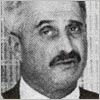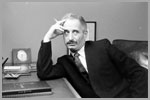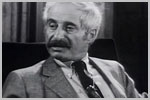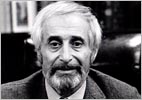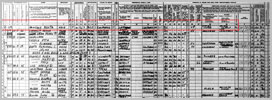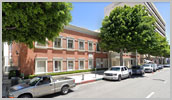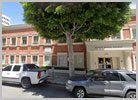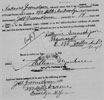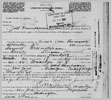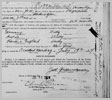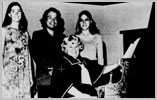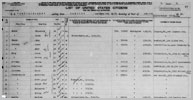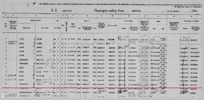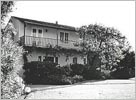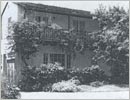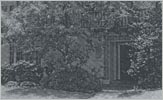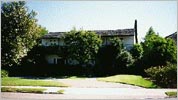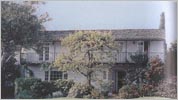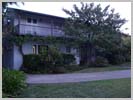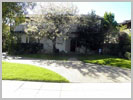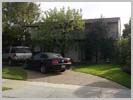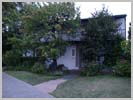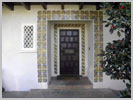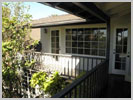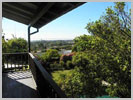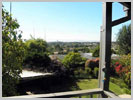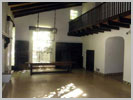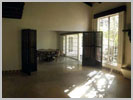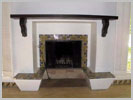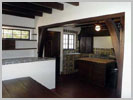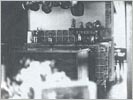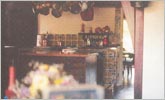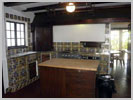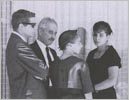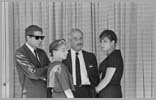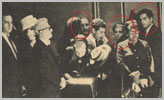
My journey ends here...
GREENSON Ralph
Born Romeo Samuel Greenschpoon.
Date of birth : September 20, 1911, Brooklyn.
Date of death : November 24, 1979, Los Angeles (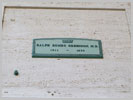 ).
).
Portrait
Addresses
* 1918 : 433 Miller Avenue, Brooklyn Kings, New York.
* 1920 : 399 Miller Avenue, Brooklyn, New York (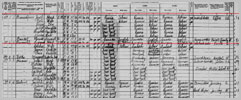 )
)
* 1928 : 3915 Highland Avenue, Brooklyn, New York (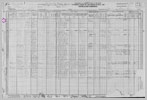 )
)
* 1939 : 816 South Ogden Drive, Los Angeles
* 1940 : 859 Wooster Street, Los Angeles ( 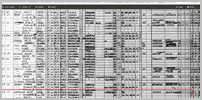 ,
,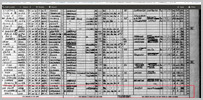 ,
,
* since 1947 : 902 Franklin Street, Santa
Monica. Gr 3-2900 ( ,
,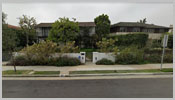 ).
).
Addresses of his office
* 1940 : 1930 Wilshire Boulevard, Los Angeles
* 1941 : 5410 Wilshire Boulevard, Los Angeles
* since 1956 : 436 North Roxbury Drive, Room 218,
Beverly Hills,CR 1-4050 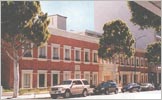 ,
,
Profession
Psychiatrist and psychoanalyst.
Member of the Psychoanalytical Society in Los Angeles.
Member of the American Psychoanalysis Association.
Member of the American Psychiatric Association.
Psychiatry teacher at the Medicine School of UCLA.
Member of the Medical Council of the Reiss-Davis Clinic.
Author of dozen of scientific publications.
Story
His parents, Russians, Joel O. Greenschpoon (December 16, 1882, Kishinew-September 28, 1954, Los Angeles)
( ,
,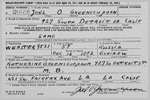 ) and Katherine Goldberg (April 8, 1887, Russia-July 27, 1971, Los
) and Katherine Goldberg (April 8, 1887, Russia-July 27, 1971, Los
Angeles)(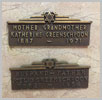 ) and got married on September 28, 1919 in New York (
) and got married on September 28, 1919 in New York (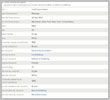 ).
).
Joel Greenschpoon emigrated in New York in December 1903, and became American citizen on February 25, 1915.
He was a family physician and lived in New York from 1904 to 1922.
From April to June 1922, he stayed in Uruguay to visit his sick brother, and in Argentina to visit his sister and
cousins; for that reason, he applied for a passport ( ,
,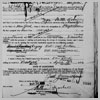 ,
,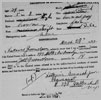 ,
,
He applied for another passport on July 16, 1924, to go to Germany, Austria, France and England for "study"
Katherine the mother, pharmacist, took care of her children. A woman with an incredible energy, she created a Yiddish cultured environment and prompted her children to practise music. Romeo studied violon.
They had 4 children :
* the twins Romeo and Juliet (September 20, 1911, New York-December 12, 1996, California).
* Elizabeth (July 9, 1914, New York-September 21, 1991, Santa Barbara, California).
She would mary the lawyer Milton Rudin with who she had 3 children ( -
-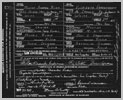 ). Musician playing cello, she belonged to the orchestra which played with Frank Sinatra during the recording of
). Musician playing cello, she belonged to the orchestra which played with Frank Sinatra during the recording of
the Capitol Records song "Mr Success" in 1958 ( ,
, ).
).
* Irving W (born January 9, 1919, New York)
From September 7 to 17, 1928 : the family travelled from Hamburg (Germany) to New York
From September 20 to 29, 1929, he travelled from Boulogne sur Mer (France) to New York
Romeo attended public elementary and high school in Brooklyn. He graduated in 1914.
He studied at the Columbia University
school of medicine in New York. A quota system was applied to Jewish
applicants to the American medical school, so Romi enrolled at the
University of Bern (Switzerland). He quickly learned German, as it was
the language of the instruction. He studied there from 1930 to 1934.
Angeles) and married her on July 12, 1935 in Los Angeles ( ,
,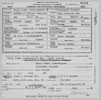 )
)
( ,
, . They had 2 children, Daniel and Joan (Greenson
Family).
. They had 2 children, Daniel and Joan (Greenson
Family).
From July 26 to August 1st, 1933, he travelled from Cherbourg, France to New York
( ).
).
He graduated with an M.D from University of Bern, in 1934.
In 1935 he began a personal psychoanalysis with Wilhelm Stekel, a Freud's disciple, in Vienna (Austria), and analytic training. In Vienna he became close friend of Anna Freud.
On March 19, 1936, he travelled, along with Hildi, from Cherbourg (France) to New York
1937, he went back to the USA and offically took the name of Greenson.
1938, he entered the new Los Angeles Pschoanalysis Institute where he met Otto Fenichel ( ) (Hanna
Fenichel) who had just arrived. He followed a Freudian analysis with him, and Fenichel would become Romeo's mentor and inspiration.
) (Hanna
Fenichel) who had just arrived. He followed a Freudian analysis with him, and Fenichel would become Romeo's mentor and inspiration.
Since November 1942, he began his national service in the Health Department, at the Veterans Hospital in Canandaigua (New
York).
He had bad reflex and an insufficient coordination of his right arm.
Became unfit to the national service abroad, he was named head of the neuropsychiatry department at the Air Force convalescence hospital, in Fort Logan (Colorado). Promoted Captain, he then ran the specialized section of "operational fatigue".
1945, he applied for being discharged of his military service to practise psychiatry in private in Los Angeles (letter dated from December 5, 1945 to the military authorities in Washington). There was a veterans community, who wanted to follow a psychiatric treatment. But he didn't obtain satisfaction.
1946, back to the civilian life, he started a second analysis with Frances Deri ( ).
).
He settled as a psychiatrist in Los Angeles.
1947, he bought a house at 902 Franklin Street, Santa Monica. He bought this house which construction had just ended, to John and Eunice Murray, who couldn't pay their loan off, for the amount of 16 500$.
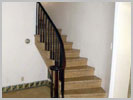 ,
,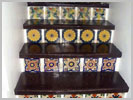 ,
,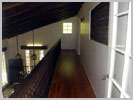 ,
, ,
,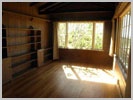 ,
,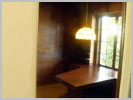 ,
,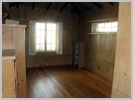 ,
,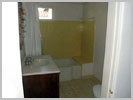 ,
,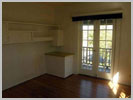 ,
,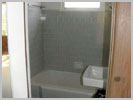 ,
,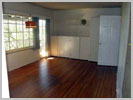 ,
,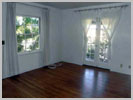 ,
,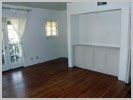 ,
,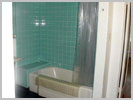 ,
,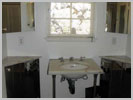 ,
, ,
,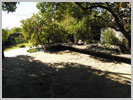 ,
,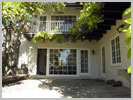 ,
,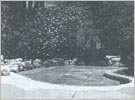 ,
,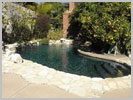 ,
,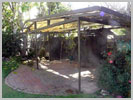 ,
,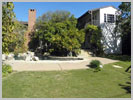
May 29, 1956, trip from Zurich to New York (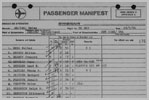 ).
).
During the 50's, he had a thriving clientele : in his Beverly Hills office flocked many celebrities and also wealthy people from the West of the county.
He started to teach psychiatry at the Medicine School of UCLA in 1953 and was taken for a popular lecturer near the specialists as the uninitiated. He was analyst (he was former and controller) at the Los Angeles Psychoanalytical Society and was an American Psychoanalytic Association life member.
In 1955 he had a heart attack.
He was named clinical professor of psychiatry at UCLA at the beginning of the 1960'.
Apart from the help he could have given to his private clients, in the south of California, he had the reputation of a speaker knowing how to fascinate his audience.
As many of his colleagues of this era, he relied a lot on the use of drugs, associated to psychotherapy.
He used to prescribe to his patients (personnaly or through their general practitioner) some barbiturates or sedatives in vogue. Thus, he tried to relieve their crisis and to make their life easier.
In the 60's, his patients were Peter Lorre, Celeste Holm, Vincente Minelli,Vivien Leigh, Inger Stevens, Frank Sinatra (become his patient on the advise of his lawyer, Milton Rudin, Greenson's brother-in-law, after he committed suicide, after his break-up with Ava Gardner).
Link with Marilyn
He met Marilyn in January 1960 while she was shooting "Let's Make Love" in Los Angeles. Dr Marianne Kris, her psychoanalyst in New York, recommended Dr Greenson to Marilyn.
During the post-production of this movie, Marilyn visited him every day at his office.
She wrote to him during her stay at the Columbia
Presbyterian Hospital, on March 2, 1961
The press had mixed comments about him. Although nobody had doubts about his devotion towards Marilyn, his methods were not much usual, and for some biographers, his motives were fallacious. He has been described as thirsting for gratitude, being only interested in famous people, tending to popularize the serious questions in the only purpose of being appreciated and attract attention.
After her return to Los Angeles, Marilyn visited him daily at his office to get some advices
(
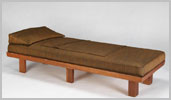 ).
).Ralph Roberts, friend, chauffeur and masseur of Marilyn, took her, during the second half of year 1961, every day, to her 4.00 PM appointment with Greenson.
From a professional point of view, he had his defenders and his opponents. He was very prolix, wrote articles, held conferences and Anna Freud regarded him with esteem (for a while, he had treated her brother Ernst Freud).
For Marilyn, he made his household a substitute family in the only purpose of setting new psychoanalysis approaches up.
In one of his articles, he urged his colleagues to "emotionally being involved in their patients life, if they wanted to establish a trustworthy therapeutic relationship".
She had to experience a stable and traditional family, to be able to found one herself. By acting this way, he seemed to have forgotten one of the ground rules of his profession : the absolute necessity of a critical distance.
October 1961, he asked Marilyn to sent Ralph Roberts back to
New York because she was very dependent on him. Few days later, he sent her Eunice
Murray.
End of 1961, Marilyn had dinner with the Greensons 3 or 4 times a week, called night and day at any time for questions, even minors, about her life and sometimes turned up at their home, even at night.
She spent her last Christmas with "Romy" as she called him (at home ha was called Romeo), although DiMaggiohad taken a plane to join her.
He exerted an influence on every aspects of Marilyn's life, whose dependency increased.
He suggested her to go back to work and persuaded her to accept the shooting of "Something's Got to Give", where he obtained the place of Marilyn's special adviser.
On his request, she hired Eunice Murray as housekeeper, first in her Doheny Drive's apartment, then at 5th Helena Drive.
Because of the tension which reigned on the set of "Something's Got to Give", Marilyn visited him twice a day. These appointments were the only ones she didn't cancel during her 2 weeks absence from the set, because she suffered from a chronic sinusitis.
On May 10, 1962 Greenson and his wife left Los Angeles for a 5 weeks trip to Israel and Switzerland. After a complete dependency period, suddenly Marilyn found her alone, with her Dexamyl boxes for only comfort.
It was the moment when the tensions with the Fox studios reached their climax, and when Marilyn was suspended. She called Greenson, he took charge of the situation and declared to the Fox managers than Marilyn was ready to go back to work.
At that time, Marilyn would have confided to her friends that her dependency towards Greenson worried her and that she was afraid that he could even be harmful. The way Greenson cut her off from the people she loved also preoccupied her. Ralph Roberts, one of Marilyn's friend Greenson had warned her about, confided to Donald Spoto : "She was deeply irritated by the way he used her... He had tried to get rid of the main part of her circle, which was relatively reduced. But when he tried to warn her against Joe DiMaggio, she began to reconsider the whole case".
Marilyn's death circumstances are contradictory and controversial. Greenson's role varies a lot according to the versions.On August 4, 1962, he visited her at home, on her request, or in the beginning of the afternoon, either in the beginning of the evening or both. He could have come until 7.00 PM with a short break, or remained with her for 2 hours, until 7.00 PM, after she had calmed down.
In his statement to the police, he said that he came back home.
The most extreme partisans of a consipracy wonder if he really came back home.
Dr Hyman Engelberg arrived and confirmed Marilyn's death, then, at 4.25 AM, they called the police.
Many Marilyn's biographers consider that Marilyn's death time is much close to 10.00 or 11.00 PM, and that this period of time would have allowed Greenson to organize or to take part in the dissimulations of the true circumstances of her death. Some suggested that Greenson was involuntarily responsible of Marilyn's death, because of his prescription of sedatives which would have worked with some others she would have taken out of his control.
On August 8, 1962, he attended, with his family, Marilyn's funeral
On August 20, 1962 he wrote to Marianne Kris, telling her that Marilyn had wanted to give her therapy up.
She was irritated when he didn't agree with her and angry with him. They would have planned to talk about it on Sunday morning.
 .
.Invoice dated June 1st, 1962
 .
.Invoice dated June 30, 1962
 .
.
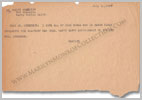 -
-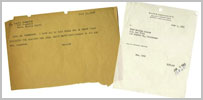 .
.
His last statement of fees for July and August 1962 came to 1 4000$  .
.
Last claim for professional services from July 1st to August 4, 1962  .
.
Then he flew to New York, followed a therapy with his friend Dr Max Shur (friend and doctor of Freud) which lasted 7 years.
Then he came back to Los Angeles where he set up with his friend Hyman Engelberg, in an office located 465
North Roxbury Drive, Beverly Hills.
He only received few patients and devoted himself to writing and teaching.
Having published anything since, he wrote his first book "The Technique and Practise of Psychoanalysis" which was published in 1967.
In 1970 diagnosed with a heart block, he was given his first pacemaker.
In 1974 he suffered from a stroke which let him aphasic for several weeks.
In 1975 he contributed to the creation of the Hanna Fenichel Center; this center had been founded by the San Diego Psychoanalytic Society and Institute in memory of Hanna Fenichel, a psychoanalyst well-known for her work about the childhood development. The center's philosophy was founded on the work of distinguished professionals having worked on the same subject, such as Anna Freud and Ralph Greenson.
He died on November 24, 1979 (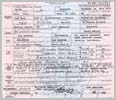 ). He's buried at the Hillside Memorial Park in Culver City, Los Angeles.
). He's buried at the Hillside Memorial Park in Culver City, Los Angeles.
He only appeared once, in 1973, to contest the version of the events published in Norman Mailer's biography.
He claimed that : "Each link between her death and any political event is false. Mr Mailer's version is disgraceful. He changes the truth, makes innuendos about her sexual life and pretends that her doctors would have given her treatments non conventional to morality. This is a pack of lies".
However, since his death, many letters and documents have been discovered by Marilyn's biographers.
In a letter sent to Dr Marianne Kris, 2 weeks after Marilyn's death, Greenson wrote : "I was hertherapist, the good father who didn't disappoint her, who helped her with his perceptive advices and at least, gave her his tenderness. I had become the most important person in her life. I felt guilty to impose her to my own family. There was something engaging in this girl, we all loved her and she knew how to be adorable".


